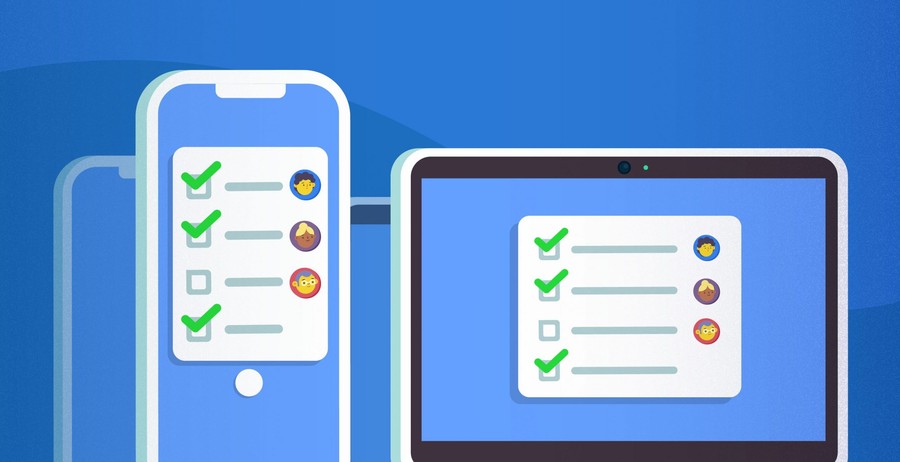Mobile apps have become an integral part of our daily lives, providing solutions for everything from social networking to fitness, banking, education, and entertainment. However, the broad app markets like gaming, eCommerce, or social media are saturated, and new entrants struggle to compete with industry giants. This has led to the rise of niche mobile app development —applications designed for a specific target audience or a unique problem. These niche apps offer a highly tailored user experience, solving problems that might be too small or too specialized for larger companies to address. In this article, we will explore how niche mobile apps are transforming specific markets, why they are becoming more popular, and what their future holds.
The Growth of Niche Mobile Apps
The global app ecosystem has matured over the last decade, with millions of apps available on the Apple App Store and Google Play Store. According to Statista, as of 2023, there are over 2.7 million apps available for download on Google Play and over 1.8 million on the Apple App Store. In such a crowded marketplace, many new apps find it difficult to capture a sizable audience. As a result, developers are turning to smaller, underserved markets and hyper-focused needs, paving the way for niche mobile apps to flourish.
These niche apps cater to specific user groups, offering customized solutions that broader platforms may not adequately address. Examples include apps designed for unique hobbies, professional groups, or specific health conditions. By zeroing in on a particular target audience, these apps can provide a more personalized, focused user experience, creating deep loyalty and engagement.
Key Drivers of Niche Mobile App Growth
- Hyper-Personalization
Today’s users expect personalized experiences tailored to their needs, preferences, and behaviors. Niche mobile apps are built around this idea, offering customized content and features for specific communities. For example, apps like FitBark cater specifically to dog owners who want to track their pet’s health and activities, while the Strava app is tailored to the needs of cyclists and runners. By creating an app focused on a particular audience, developers can offer more relevant features and content, which drives engagement. - Technological Advancements
The advancement of mobile technologies, including artificial intelligence (AI), augmented reality (AR), and machine learning, has allowed niche apps to deliver highly personalized and innovative experiences. For instance, AI-powered apps in niche markets like PlantSnap, which helps users identify plants by taking a photo, or Sleep Cycle, which monitors users’ sleep patterns and provides tailored insights, use advanced algorithms to deliver unique and valuable experiences. - Social Connectivity in Specialized Communities
Niche apps often foster tight-knit communities around shared interests. Apps like Fishbrain, a fishing app for anglers, or Letterboxd, a social platform for movie lovers, allow users to connect with others who share their interests. These communities are often highly engaged because they provide a space for people with similar passions to share experiences, insights, and tips. - Underserved Markets
Many niche apps succeed because they cater to markets that have been overlooked or underserved by larger apps. For example, apps designed for very specific medical conditions, such as MediSafe for medication tracking, or apps for niche hobbies like birdwatching (Merlin Bird ID) or knitting (Knit Companion), fill gaps where mainstream apps either cannot or do not want to compete. - Lower Development Costs
The reduced cost of app development, thanks to improved development frameworks and no-code/low-code platforms, has enabled smaller developers and startups to create niche apps without the need for extensive financial resources. This has led to a proliferation of niche apps, where smaller teams can build and maintain applications for a focused audience without having to scale for mass-market appeal.
Popular Categories of Niche Mobile Apps
- Health and Wellness Apps
Health and wellness is one of the most active niches for mobile app development, as users seek personalized solutions for their physical and mental well-being. Unlike broad fitness apps like MyFitnessPal, niche health apps focus on specific health needs, such as:
- Fertility and Pregnancy Apps: Apps like Flo or Clue focus on tracking menstrual cycles, fertility windows, and pregnancy stages, offering tailored health insights for women.
- Mental Health and Mindfulness: Niche apps like Calm Harm, designed specifically to help users manage self-harm urges, or Talkspace, which provides virtual therapy sessions, offer solutions to specific mental health challenges.
- Condition-Specific Apps: Apps that focus on managing specific health conditions, such as Glucose Buddy for diabetes or Migraine Buddy for tracking migraines, are growing in popularity.
- Eco-Friendly and Sustainable Living Apps
With growing interest in sustainability and environmental responsibility, several niche apps focus on eco-friendly living. Apps like Olio allow users to share surplus food to reduce food waste, while JouleBug gamifies sustainability efforts, rewarding users for eco-friendly actions like reducing energy usage or recycling. These apps serve a community of environmentally conscious individuals looking for actionable ways to live more sustainably. - Pet Care Apps
Pet owners are passionate about their pets, and niche apps in this category cater specifically to their needs. Pawtrack is a GPS-tracking collar app for cats, while PetDesk helps users keep track of their pet’s vet appointments, medications, and health records. These apps provide pet-specific services that larger platforms often overlook. - Hobbyist Apps
Hobby-based niche apps are becoming increasingly popular, as they focus on highly specific activities or interests. For example:
- Geocaching: An app that allows users to participate in a global treasure hunt, geocaching enthusiasts use the app to locate and hide treasures all over the world.
- com: While chess is a well-known game, the Chess.com app is a niche platform for chess enthusiasts, offering online games, tutorials, and challenges for users of all skill levels.
- Professional and Networking Apps
Some niche apps are designed for specific professions or career fields, such as Doximity, a professional networking app for doctors, or Shapr, a more personalized, interest-based professional networking app. These apps create networking spaces that are more targeted than LinkedIn and cater to the unique needs of a specific professional group. - Language and Learning Apps
Niche educational apps target specific learning styles or content areas. For instance, while Duolingo is a broad-based language learning app, niche apps like Lingbe offer language exchange services, where users can practice a language by speaking to native speakers in real-time. Meanwhile, apps like Khan Academy Kids offer a specific learning experience tailored to young children.
Case Studies of Successful Niche Mobile Apps
- Couch to 5K (Fitness App)
One of the most well-known niche fitness apps, Couch to 5K is designed for beginners looking to complete their first 5K run. The app offers a structured program that gradually increases the difficulty over nine weeks. Its narrow focus on first-time runners differentiates it from broader fitness apps like Fitbit, which cater to a wider audience. Couch to 5K has been highly successful due to its clear value proposition and ability to guide users through a very specific journey. - Calm (Mental Health and Mindfulness App)
While Calm has become a leading name in the mental health app space, it started as a niche app focused specifically on mindfulness and meditation. Its narrow focus helped it stand out from broader wellness apps and built a strong following among people seeking help with anxiety, sleep problems, and relaxation techniques. Today, Calm remains a niche player with a highly dedicated user base, despite expanding into other areas of wellness. - Untappd (Craft Beer Community App)
Untappd is a niche social app for craft beer enthusiasts, allowing users to check in beers, share reviews, and discover new breweries and beers nearby. Untappd taps into the growing community of craft beer lovers and offers features specifically designed for them, such as beer recommendations and brewery events. The app has successfully built a tight-knit community that uses the platform to connect and share experiences around their passion for craft beer.
Challenges for Niche Mobile Apps
Despite the benefits, niche apps also face several challenges:
- Limited Audience Size
By focusing on a specific group, niche apps inherently limit their potential audience size. While this focus can result in higher user engagement and loyalty, it can also constrain growth and revenue potential. Developers of niche apps must balance providing specialized content with the need for sustainable business models, often relying on subscriptions, freemium models, or partnerships for monetization. - High Competition in Narrow Markets
While niche markets can provide opportunities for differentiation, they can also become crowded quickly. As more developers recognize the potential of niche apps, competition within these small markets intensifies. It becomes essential for niche apps to continually innovate, improve user experience, and deliver unique value to stand out in their category. - Marketing Challenges
Marketing a niche app can be more difficult than marketing a broad-based app because the target audience is smaller and often harder to reach. Developers need to rely on specialized marketing strategies, such as influencer partnerships, community engagement, or direct advertising in specific interest groups, to reach the right users.
The Future of Niche Mobile Apps
As the app ecosystem continues to evolve, niche apps will likely play an increasingly important role. The demand for personalized, focused solutions is growing, and advancements in technology will allow niche apps to deliver even more tailored experiences. AI, machine learning, and data analytics will continue to improve user personalization, enabling niche apps to refine their offerings based on user behavior and preferences.
Additionally, the rise of the Internet of Things (IoT) and wearable devices will open new possibilities for niche apps in areas like healthcare, fitness, and smart homes. As more devices become connected, niche apps will be able to provide hyper-focused solutions for specific needs, whether it’s monitoring a health condition or optimizing energy usage in a home.
Conclusion
The rise of niche mobile apps is transforming the way users interact with technology by offering highly personalized, focused solutions for specific needs. From health and wellness to professional networking, hobbyist activities, and eco-friendly living, niche apps cater to a wide range of interests and problems that mainstream apps may overlook. While they face challenges such as limited audience sizes and competition, niche apps provide deep engagement, community building, and a unique user experience that make them a valuable part of the mobile app ecosystem.
As technology continues to evolve, the demand for more personalized and specialized apps will grow, ensuring that niche mobile apps have a promising future in the app development landscape. Developers who focus on solving unique problems and delivering tailored experiences will find opportunities for success in these specialized markets.












